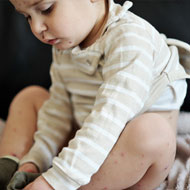- Toddler Measles Symptoms
- Toddler Flu Treatment
- Toddler Flu Symptoms
- Toddler Stomach Flu Symptoms
- Toddler Hair Loss
- Toddler Urinary Tract Infection Symptoms
- Toddler Tonsillectomy Recovery
- Toddler Periorbital Cellulitis
- Toddler Vomiting and Diarrhea
- Types of Toddler Vomiting
- Toddler Vomiting Treatment
- Toddler Cough Vomit
- Toddler Dandruff
- Toddler Bowlegs
- Toddler Eye Infection
- Toddler Pink Eye
- Toddler Pink Eye Symptoms
- Toddler Eye Problems
- Toddler Hearing Loss Signs
- Symptoms Of Pinworms In Toddlers
- Toddler Blood Infection
- Toddler Mononucleosis
- Toddler Motion Sickness
- Toddler Labial Adhesion
- Lyumphoma in Toddlers
- Toddler Scabies
- Toddler Pinworms
- Toddler Insect Bites
- Toddler Meningitis
- Toddler Moles
- Toddler Lyme Disease
- Toddler Nosebleeds
- Toddler Ingrown Toenail
- Toddler Lead Poisoning
- Toddler Hair Loss Alopecia Areata
- Toddler Rubella
- Toddler Tonsillectomy
- Toddler Iron-Deficiency Anemia
- Toddler Tooth Discoloration
- Toddler Concussion
- Toddler Psoriasis
- Toddler Sunburn
- Toddler Tongue Blisters
- Toddler Impetigo
- Toddler Blepharitis
- Toddler Burns
- Toddler Burn Treatment
- Toddler Eczema Face
- Toddler Eczema Symptoms
- Toddler Urinary Tract Infection
- Toddler Boy Urinary Tract Infection
- Toddler Epilepsy
- Toddler Epilepsy Symptoms
- Toddler Walking Pneumonia
- Toddler Yeast Infection Symptoms
- Toddler Frostbite
- Toddler Hand Foot And Mouth Disease
- Toddler Dry Scalp
- Toddler Dry Skin
- Toddler Strep Throat
- Toddler Strep Throat Symptoms
- Toddler Sore Throat
- Toddler Mumps
- Toddler Bacterial Infection
- Shaken Baby Syndrome
- Shaken Baby Syndrome Symptoms
- Toddler Tonsillitis
- Toddler Eye Discharge
- Toddler Fifth Disease
- Toddler Febrile Seizures
- Toddler Food Poisoning
- Toddler Gingivostomatitis
- Toddler Stomach Ache
- Toddler Warts
- Toddler Tuberculosis
- Toddler Torticollis
- Toddler Tick Bites
- Toddler Ear Infection Remedies
- Toddler Ear Infection Symptoms
- Toddler Ear Infection Signs
- Toddler Concussion Signs
- Toddler Bronchitis
- Toddler Colds
- Toddler Chicken Pox
- Toddler Appendicitis
- Toddler Asthma
- Toddler Birthmarks
- Toddler Strabismus
- Toddler Wheezing
- Toddler Sprains
- Toddlers Tinea Versicolor
- Toddler Viral Infection
- Toddler Yeast Infection
- Toddler Hives
- Toddler Canker Sores
Signs of Heat Stroke in Toddlers
Toddler heat stroke is a serious condition which can become fatal if uncared for. Children, especially babies and toddlers, are susceptible to heat stroke if exposed to extreme hot weather and get dehydrated. In heat stroke, the body's temperature rises faster than the body's ability to cool down.
A combination of heat and dehydration worsens the situation. The body temperature rises to 105 °F without any sweat to cool it down
Symptoms of heat stroke in toddlers
The toddler may initially experience heat exhaustion.
p. which is milder with symptoms like thirst, leg or stomach cramps, and fatigueu The skin will feel cool and moists This can lead to a heat stroke when your toddler's body temperature rises to 103 °F or highere This is accompanied by hot, dry and red skin, headaches, muscle cramps, dry mouth and eyes, vomiting, general confusion, decreased amount of urine that is dark in color with a strong odor, rapid shallow breathing, and extreme restlessnesss The nausea in the child may be more overpowering and might make the child less thirstyt
How to prevent heat stroke in toddlers
When it comes to heat stroke in toddlers, the best answer lies in protecting them from heat strokek Give the child plenty of fluids when the weather is generally hoto Remember to keep the child hydrated as summer begins and the child is getting adjusted to the weathere Dress the toddler in loose, lightweight clothes that fully cover himi
Try not to leave him outdoors for too longn If the child is a little tired and exhausted by staying outdoors, keep him inside the house and make him rest well and give him fluids to prevent dehydrationo When you take him out, remember, never leave him in the car as the temperature in the car tends to rise faster than it does outsided
In case, the child shows signs of heat exhaustion, take the child to a shaded area, take off the clothes and place him in a cool batht Avoid making the water too cold as it might lead to shivering and fevere
If you recognise that the child has heat stroke, call for emergency medical attention and while you wait for help to arrive, allow him to rests Keep him covered in cool damp clothes or sponge the body with a wash cloth and fan himi Do not give him fluids even if you are tempted and do give any medication to reduce the body temperaturer If you are out of your home seek the shelter of a library or shopping mall to prevent further exhaustiono
p

